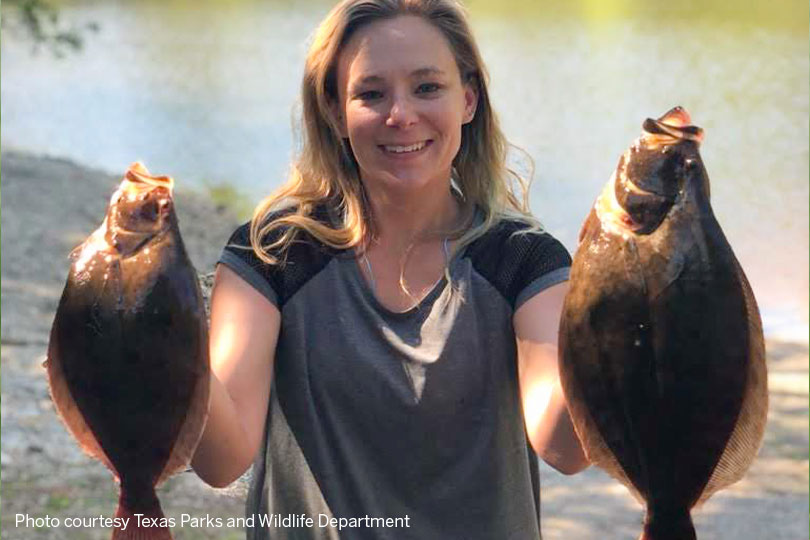By Jessica Domel
Multimedia Reporter
Later this week, Texas anglers will once again be able to retain any legal sized flounder they catch in state waters.
The flounder fishery out to nine nautical miles is closed to anglers from Nov. 1-Dec. 14 each year.
“We changed flounder regulations in 2021 to close the flounder fishery for six weeks in the fall for both the recreational and commercial sectors,” Julie Hagen, social media specialist for the Texas Parks and Wildlife Department (TPWD) Coastal Fisheries Division, said. “This closure helps to keep spawning females in the water, which will help populations increase.”
TPWD made the decision to change flounder regulations in 2019. The proposed changes were adopted by the Texas Parks and Wildlife Commission in 2020 and implemented in 2021.
“It’s due to overall population declines we’ve been seeing since the 1980s,” Hagen said in an interview with the Texas Farm Bureau Radio Network.
To learn more about the flounder fishery, its popularity and angler habits, the coastal fisheries division launched a new research study that kicks-off Thursday, Dec. 15.
“We’re currently working on a research study regarding nighttime flounder fishing,” Hagen said. “It’s actually a very popular species that’s targeted at night, unlike some of our other species, because people tend to like to gig for flounder. That’s a very specific gear type. They tend to do it at night because that’s kind of the best time to be able to use the gig to get the flounder.”
There’s not much research right now about how many flounder are caught by gigging at night since the department does not conduct creel surveys, or angler surveys, at night.
“My team has come up with a study, and we recently got a grant,” Hagen said. “We’ll be doing nighttime creel surveys with anglers on the middle coast, asking them questions about their flounder catches.”
The survey is voluntary. Coastal fisheries staff will simply ask anglers to see their catch to determine the species and will verify the flounders’ lengths.
TPWD Coastal Fisheries staff will not be issuing citations when checking anglers’ catches on the mid-coast. They’ll just be collecting data in Aransas and Matagorda bays and parts of the San Antonio Bay.
Anglers along the coast are also being asked to self-report their flounder catches using the My Texas Hunt Harvest app.
“It’s completely voluntary. It’s just going to help us get more data and have that citizen science component to it. People who are fishing day or night in any bay system, we ask that they go onto this app—it’s a free download—and you just tell us about your catch, how many you caught, how big they were and where you were.”
The team will use that data, along with the research they’re conducting on the coast, to hopefully get more information about the nighttime fishery and its popularity.
“That’s going to help us really flesh out this population data because the more we know about anglers’ habits, the better data we have where we can make better management decisions,” Hagen said.
The study is in response to comments TPWD received during 2020 regulation changes asking to see data about the nighttime flounder fishery.
Anglers can start reporting their flounder catches on the My Texas Hunt Harvest app Thursday, Dec. 15. Until then, since the fishery is closed, the option to report a catch is not available on the app.
When the closure ends, anglers can catch up to the daily bag limit of five. All fish that are retained must reach the minimum length limit of 15 inches.
Additional flounder regulations are available here.

